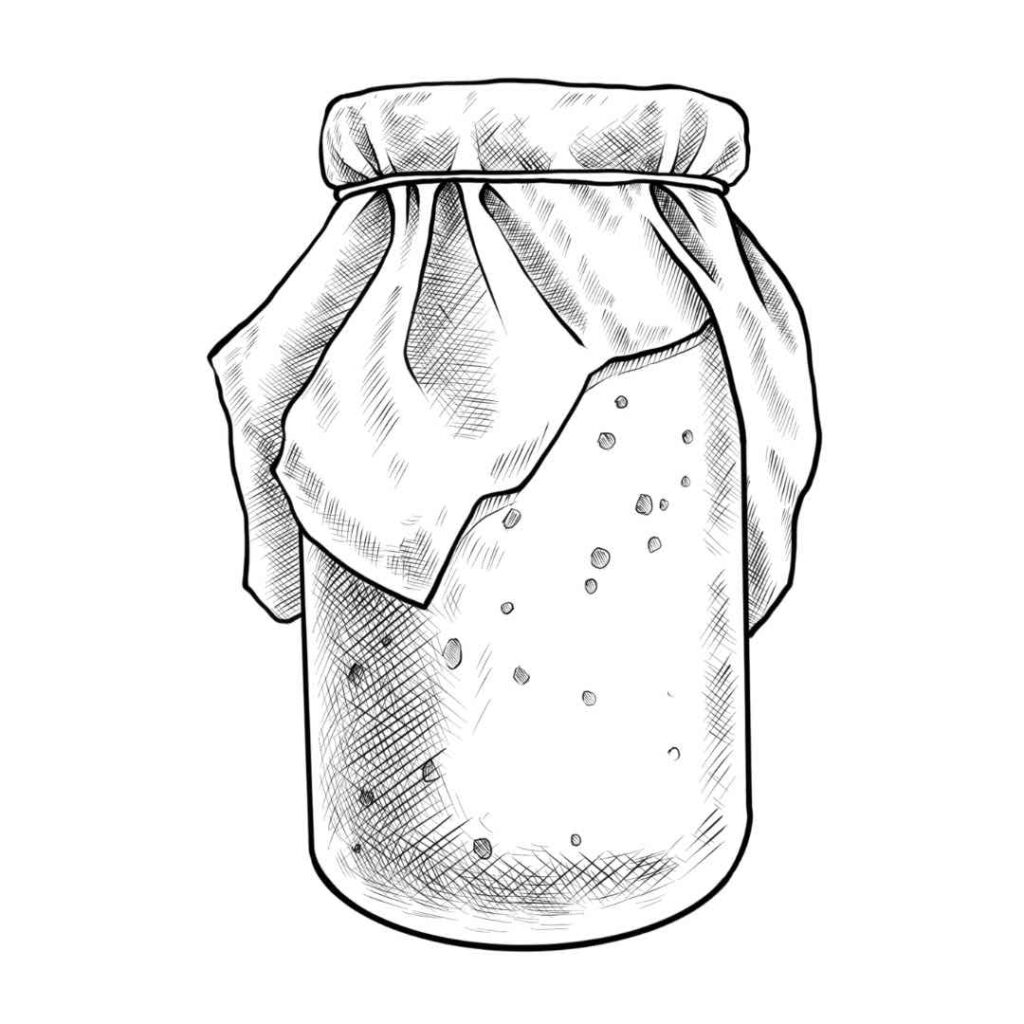Fermenting Dairy: A Homesteader’s Guide to Cultured Goodness
What is Fermentation?
Fermentation is a natural process where microorganisms like bacteria, yeast, or fungi convert organic compounds—primarily sugars and starches—into alcohol or acids. This process not only preserves food but also enhances its flavor and nutritional profile. For dairy products, fermentation typically involves converting lactose (milk sugar) into lactic acid, creating tangy, delicious foods like yogurt, kefir, and cheese.
What is Lactofermentation?
Lactofermentation is a type of fermentation that involves the transformation of carbohydrates into lactic acid by beneficial bacteria. The name “lacto” refers to lactic acid, which is the primary byproduct of this process, not lactose (milk sugar). This process is commonly used to preserve and enhance the flavor and nutritional value of various foods, including vegetables, dairy products, and even grains.
The Science Behind Lactofermentation
At the core of lactofermentation are lactic acid bacteria (LAB), such as Lactobacillus. These bacteria thrive in environments rich in sugars and produce lactic acid as they metabolize these sugars. The increase in lactic acid lowers the pH of the environment, creating acidic conditions that inhibit the growth of harmful bacteria, thereby preserving the food.
Key steps in lactofermentation include:
- Preparation: The food to be fermented is prepared, which may involve cutting, shredding, or crushing. In the case of dairy, this may involve heating and cooling milk.
- Inoculation: The food is then inoculated with a starter culture of LAB, or it naturally attracts these bacteria from the environment.
- Fermentation: The food is stored in an anaerobic (oxygen-free) environment, allowing the LAB to thrive and produce lactic acid.
- Maturation: Over time, the food matures as the flavors develop and beneficial bacteria proliferate.
Benefits of Lactofermentation
- Probiotics: Lactofermented foods are rich in probiotics, which are beneficial bacteria that support gut health and boost the immune system.
- Nutrient Enhancement: Fermentation can increase the availability of vitamins and minerals, making them easier for your body to absorb.
- Digestibility: Lactofermentation breaks down complex carbohydrates and proteins, making foods easier to digest.
- Flavor Development: The fermentation process enhances the flavor profile of foods, adding tangy, sour notes that are highly prized in culinary traditions.
- Longer Shelf Life: The acidity and beneficial microbes in fermented foods help preserve them naturally.
Risks of Fermentation
While fermentation is generally safe, there are some risks to be aware of:
- Contamination: If not done correctly, harmful bacteria can contaminate your food.
- Hygiene: Cleanliness is crucial to avoid introducing unwanted pathogens.
- Allergic Reactions: People with allergies to certain strains of bacteria or molds should proceed with caution.
If you want to read more about the contamination risks and the pathogens involved click here
Tips for Successful Fermentation
- Use Fresh Ingredients: Always start with the freshest milk and cultures.
- Maintain Cleanliness: Sterilize all equipment to prevent contamination.
- Monitor Temperature: Use a thermometer to ensure milk is heated and cooled to the correct temperatures.
- Be Patient: Fermentation times can vary. Check your products regularly but give them the time they need to develop the right flavor and texture.
Fermenting dairy at home can be a rewarding process that yields delicious, healthy foods. With a little practice and attention to detail, you’ll be enjoying your own homemade yogurt, kefir, and cheese in no time! Happy fermenting
Getting Started: Easy Dairy Fermentation Recipes
Homemade Yogurt
Ingredients:
- 1 quart of milk (whole, skim, or any preference)
- 2 tablespoons of plain yogurt with live cultures (as a starter)
Instructions:
- Heat the Milk: Pour the milk into a pot and heat it to 180°F (82°C) to kill any undesirable bacteria. Stir occasionally to prevent a skin from forming.
- Cool the Milk: Let the milk cool to 110°F (43°C). You can speed up this process by placing the pot in a sink filled with cold water.
- Add the Starter: Stir in the plain yogurt into the cooled milk.
- Incubate: Pour the mixture into a clean container and cover it. Keep it warm (around 110°F or 43°C) for 5-10 hours. You can use a yogurt maker, a warm oven, or a cooler with warm water.
- Refrigerate: Once the yogurt has thickened, refrigerate it for at least 2 hours before serving.
Simple Kefir
Ingredients:
- 1 quart of milk
- 1 tablespoon of kefir grains
Instructions:
- Combine Milk and Kefir Grains: Place the kefir grains in a clean glass jar and pour the milk over them.
- Ferment: Cover the jar with a cloth or coffee filter and secure it with a rubber band. Leave it at room temperature for 24 hours.
- Strain and Store: After 24 hours, strain the kefir grains from the liquid and transfer the kefir to a jar with a lid. Store in the refrigerator. The grains can be reused indefinitely for new batches.
Basic Farmer’s Cheese
Ingredients:
- 1 gallon of milk
- 1/4 cup of white vinegar or lemon juice
- Salt to taste
Instructions:
- Heat the Milk: Pour the milk into a large pot and heat it to 185°F (85°C), stirring occasionally.
- Add Acid: Remove from heat and slowly add the vinegar or lemon juice while stirring. The milk will start to curdle.
- Strain Curds: Let the mixture sit for about 10 minutes, then pour it through a cheesecloth-lined strainer to separate the curds from the whey.
- Season and Store: Gather the cheesecloth and gently squeeze out excess whey. Add salt to the curds if desired, then transfer the cheese to a container and refrigerate.

Recipe Categories


